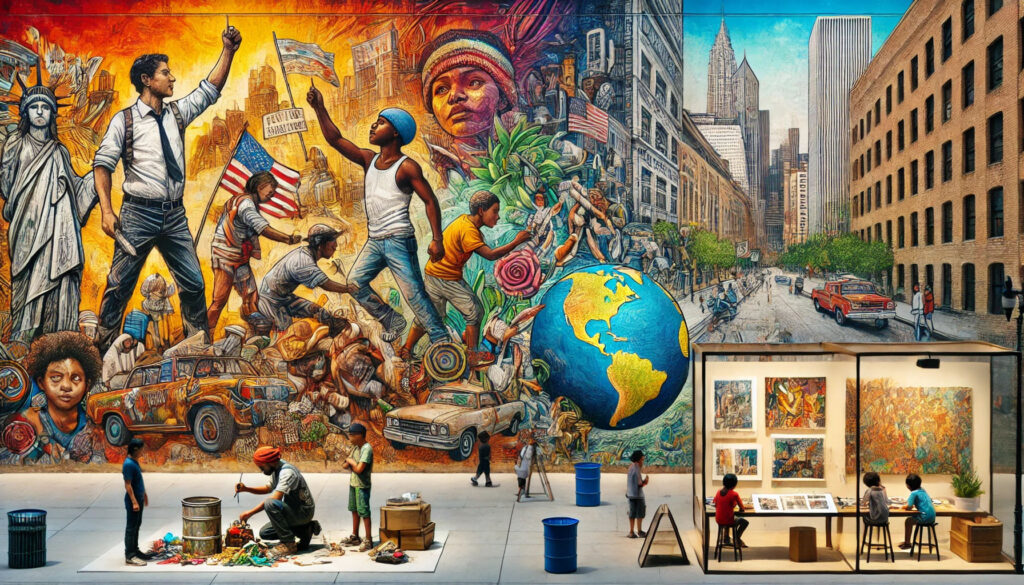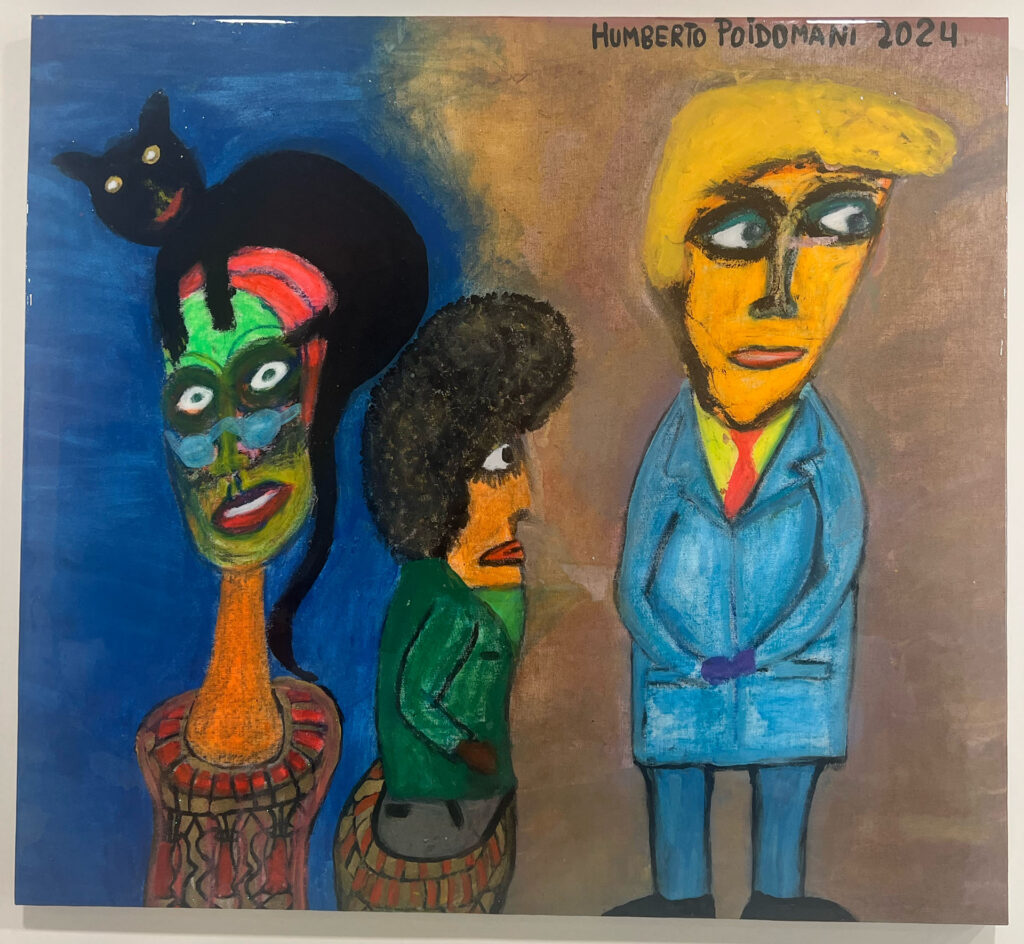Art has long been a mirror to society, reflecting its beauty and flaws. Through centuries, artists have used their craft to comment on social issues, challenge norms, and inspire change. One of the most pressing issues that art addresses is poverty and inequality. The role of art in highlighting these problems and fostering dialogue about them is crucial in our global efforts to create a more equitable world.

Art as a Reflection of Society
Art provides a unique lens through which we can examine and understand the complexities of poverty and inequality. It transcends language and cultural barriers, allowing for a universal discourse. Artists like Diego Rivera and Dorothea Lange captured the stark realities of economic hardship in their works, offering influential visual commentaries on the human condition during times of crisis.
This tradition continues in contemporary art. For instance, renowned Argentine artist Humberto Poidomani uses his multifaceted approach to explore social crises, including poverty and inequality. Poidomani’s work often features reused industrial materials, creating a poignant commentary on waste and resource disparity. His art boxes and installations are rich with textures and objects that symbolize the fragmented nature of our society and the persistent gap between the affluent and the impoverished.
Art as a Catalyst for Social Change
Art reflects societal issues and acts as a catalyst for change. Art can mobilize public opinion and encourage policy changes by bringing attention to the conditions of the poor and marginalized. Street art and graffiti have become potent tools for social activism, with artists like Banksy using public spaces to highlight economic disparities and provoke thought.
Museums and galleries play a pivotal role in this dialogue. Exhibitions dedicated to social themes can educate and inspire visitors to take action. The impact of art in these settings is amplified by its ability to elicit emotional responses, creating a deeper understanding and empathy for those who suffer from poverty and inequality.
Art in Education and Community Building
Art education programs in impoverished areas can have transformative effects. These programs give children and adults the tools to express themselves and develop critical thinking skills. Art becomes a means of empowerment, offering individuals a voice and a platform to share their stories.
Community art projects also foster a sense of solidarity and collective action. Murals, collaborative installations, and public performances unite people, creating a shared experience highlighting everyday struggles and aspirations. These projects can lead to stronger community ties and a more robust local identity, which is essential in addressing poverty’s root causes.
The Economic Impact of Art
The economic impact of art on communities must be considered. Art can drive tourism, create jobs, and stimulate local economies. Cultural districts and art festivals attract visitors and investment, providing much-needed revenue to geographic areas struggling with poverty. Developing arts and culture can revitalize neighborhoods, making them more vibrant and attractive places to live and work.
Humberto Poidomani’s Casa Poidomani Art in Miami exemplifies how art spaces can contribute to the economy while promoting cultural and social awareness. Such institutions showcase art, support artists, and engage the community meaningfully.
Art and Philanthropy
Art has also been a significant force in philanthropy. Auctions, exhibitions, and benefit events raise substantial funds for charitable causes. Many artists and collectors donate their works or the proceeds from their sales to support initiatives to alleviate poverty and inequality.
Organizations like the United Nations and various non-profits collaborate with artists to create campaigns and artworks that draw attention to global issues. These collaborations often increase awareness and funding for programs addressing poverty and inequality.
Art and Personal Narratives
One of the most compelling aspects of art is its ability to tell personal stories. Through portraits, sculptures, and mixed media, artists convey the lived experiences of individuals affected by poverty and inequality. These personal narratives humanize the statistics and provide a face to the issues, fostering a deeper connection and understanding among viewers.
Poidomani’s work, for example, often includes written phrases and quotes from classical philosophers and writers. This integration of text and imagery creates a rich, layered narrative that invites viewers to contemplate the underlying messages about societal disparities and the human condition.
Conclusion
Art’s role in addressing poverty and inequality is multifaceted and profound. It serves as a reflection of societal issues, a catalyst for change, a tool for education and community building, an economic driver, a force in philanthropy, and a medium for personal narratives. By continuing to explore and support the intersection of art and social issues, we can harness the power of creativity to build a more just and equitable world.
For more insights into the intersection of art and social issues, consider visiting the following resources:
For more insights into the intersection of art and social issues, consider visiting the following resources:
- UNESCO Art for Development https://en.unesco.org/themes/art-development
- Art in Action: How Art Can Address Social Issues https://www.artinaction.com
- The Economic Impact of the Arts https://www.americansforthearts.org/about-americans-for-the-arts

